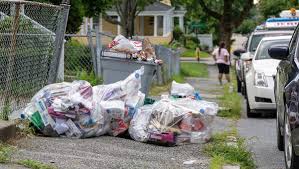It is preferable for people not to get their hands dirty. Garbage collection has historically been assigned to culture’s lower echelons, with those who aren’t directly involved adopting an “out of sight, out of mind” mindset. Today, however, the amount and complexity of garbage produced are posing a greater threat to human health and the environment than ever before. The makeup of garbage has changed, with the number of chemicals we dump being the most significant change. Chemicals, whether in pill form, pesticide form, or paint form, are a necessary component of our daily life. According to All Gone Rubbish Removals, the disposal of waste from these substances has exacerbated issues with how we handle garbage, requiring us to confront what we’d rather toss away. Water, air, and soil pollution are all common. The brain is affected by lead in the air.
Plants absorb heavy metals from the soil and pass them on to us when people eat them. The environment is also severely impacted. Acid rain is killing trees. Pollution has turned rivers dark. Green waste from petrochemical plants contaminates areas where children play.
The growing complexity of garbage has caught rubbish disposal Sutherland Shire authorities off guard, and today’s hazardous waste is exposing the system’s flaws. The “tip,” now known as a landfill, is the most frequent method of trash disposal. Landfills are holes in the ground where garbage is thrown. The garbage sits and eventually decomposes. Liquids slowly seep into the earth and down into the groundwater, eventually reaching the water we drink and use. Nature can handle a small amount of abuse, but the amount of garbage has grown to the point that it is no longer manageable. Modern landfill sites are walled with plastic or clay to prevent dangerous waste from escaping into the surrounding soil, which helps to solve the problem of containing poisonous waste. However, this is only a temporary solution: landfills will ultimately leak.
Some garbage is burned to get rid of it
Burning is used to dispose of some garbage. This is dependent on what you’re burning, at what temperature, and where the smoke-borne waste eventually settles. The presence of black smoke indicates that whatever is in the furnace is not fully burning. As in the case of some compounds found in lubricants, electrical transformers, and many other items we use on a daily basis, this can enhance the risk to the environment. These chemicals are among the most toxic ever created, and they are extremely difficult to eliminate. They are assumed to be destroyed by high-temperature burning, but if they are burned at a lower temperature, dangerous poisons are produced. High-temperature burning, on the other hand, necessitates experienced management and specialized furnaces, making it costly.
Conclusion:- Recycling garbage is another option for dealing with it. The industry is starting to understand the value of repurposing its trash. Nothing, on the other hand, beats prevention, and we all have a role to play. All we have to do is look in our trash cans. Poisonous waste is made worse by plastic containers, fluorescent light tubes, nail polish, fly sprays, and garden chemicals. Although households produce less garbage than industry, it can be just as destructive.











